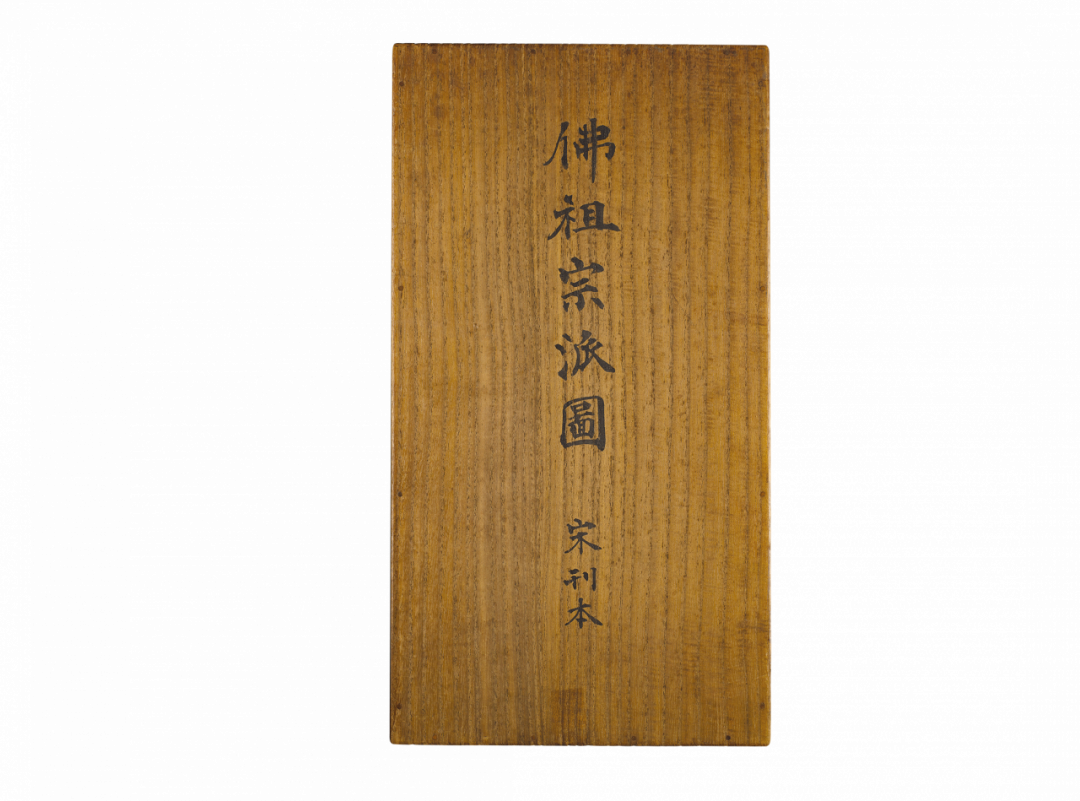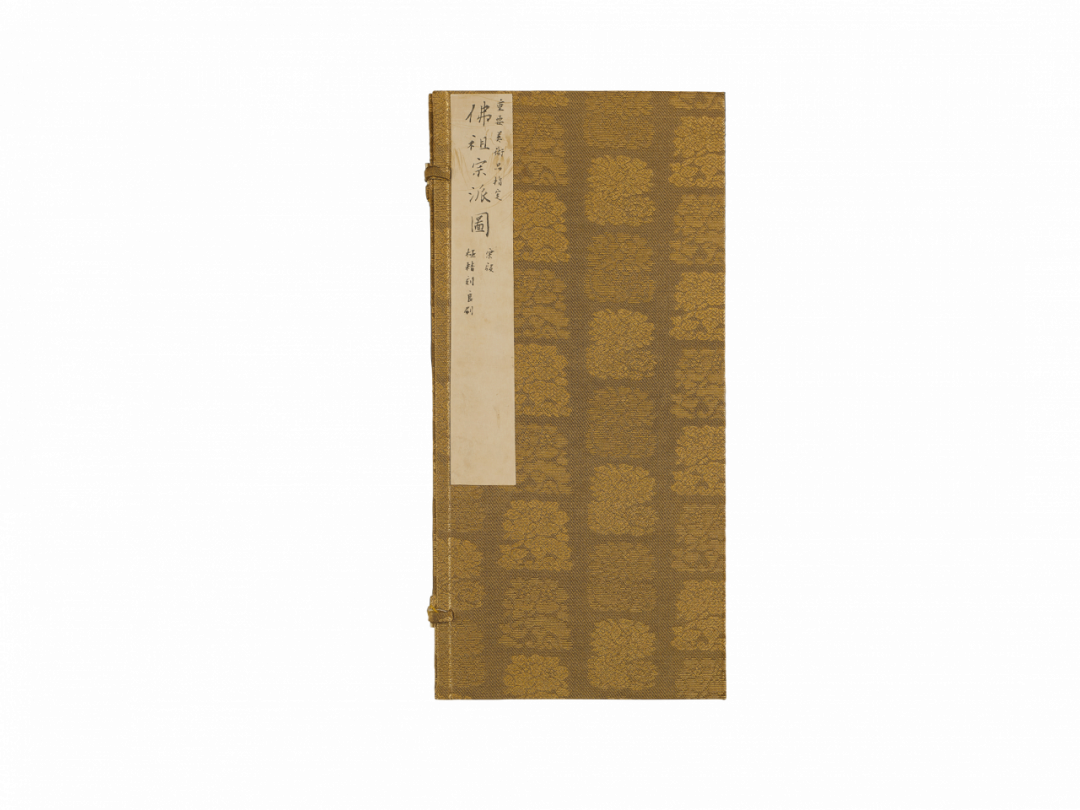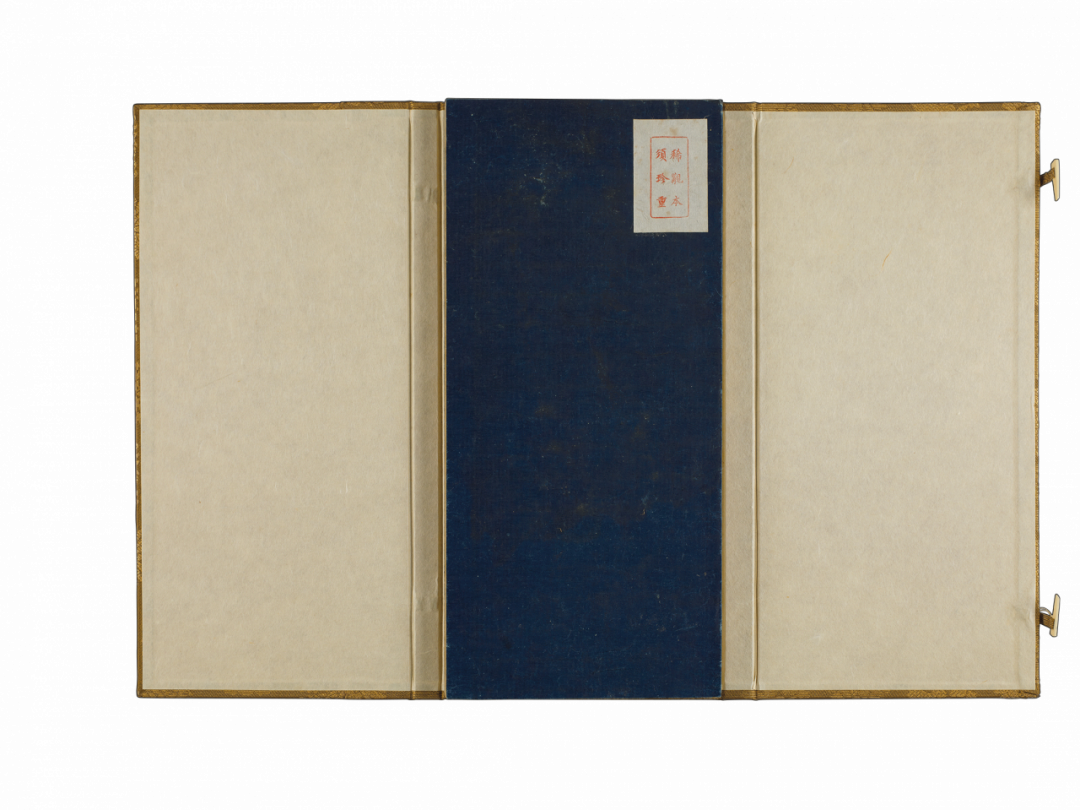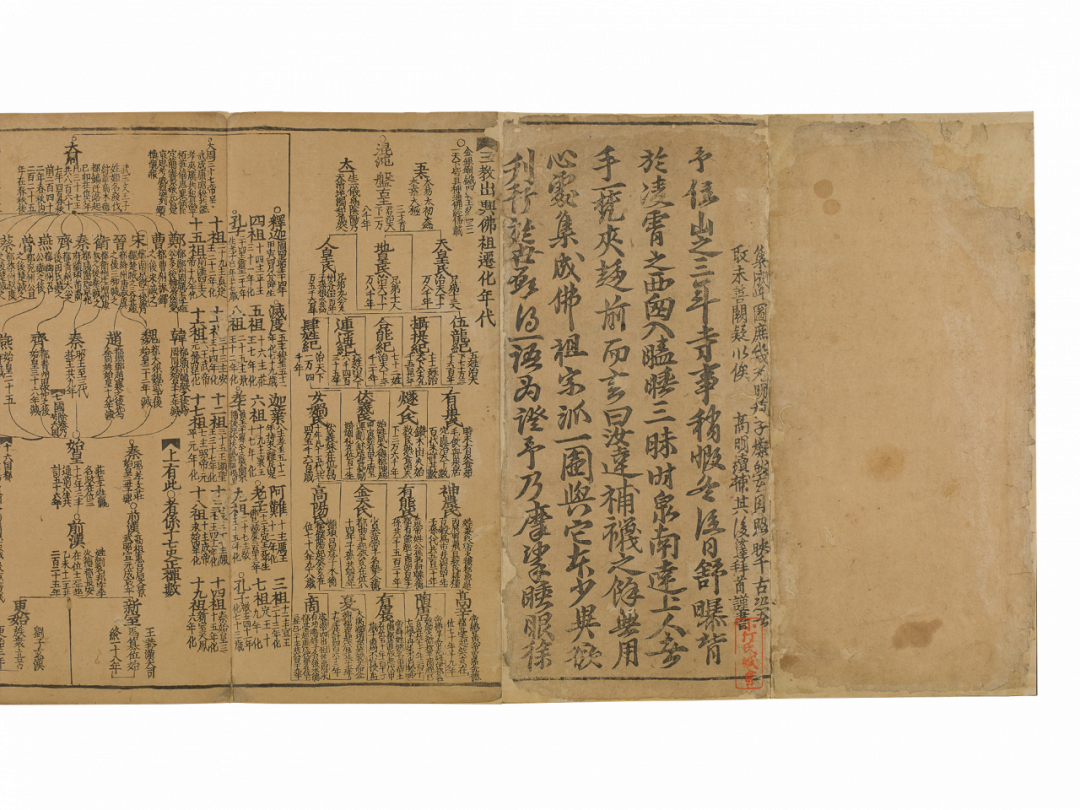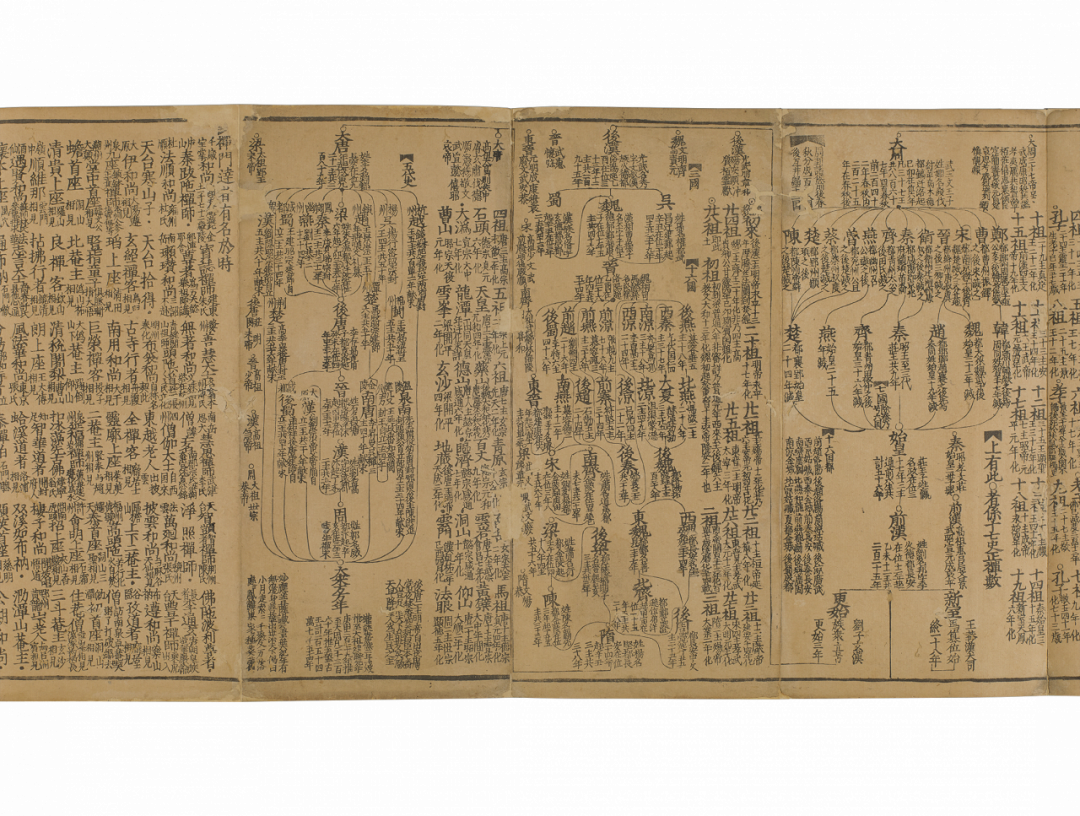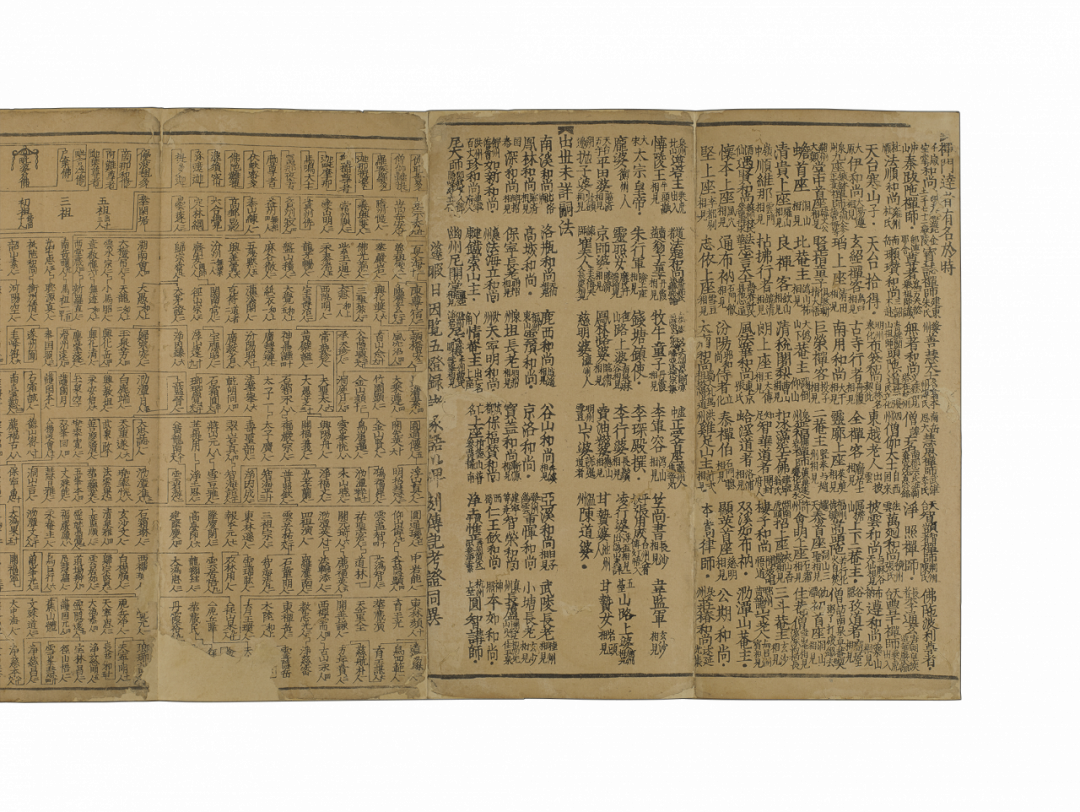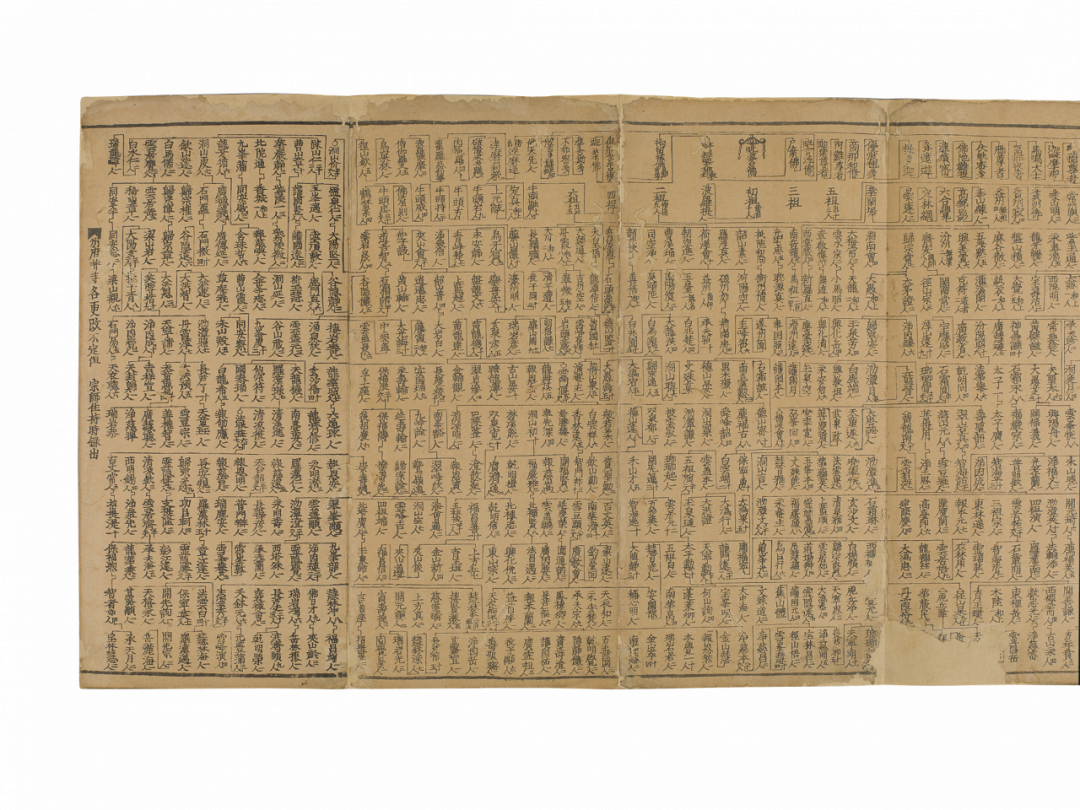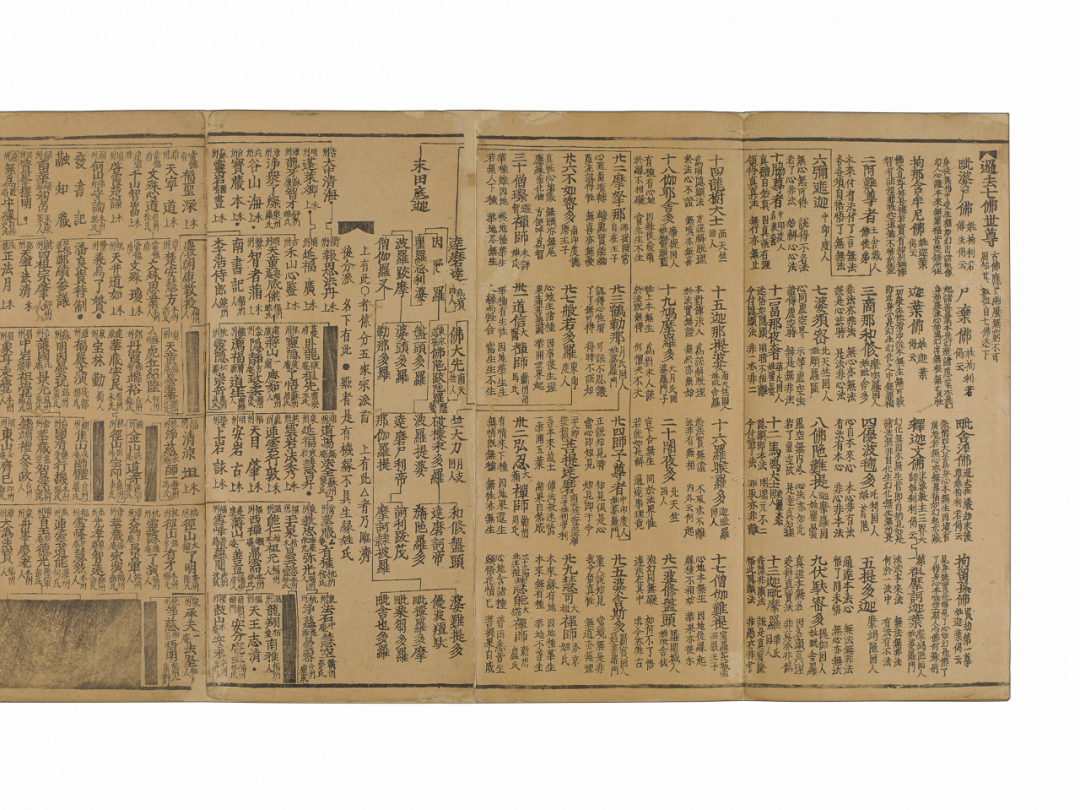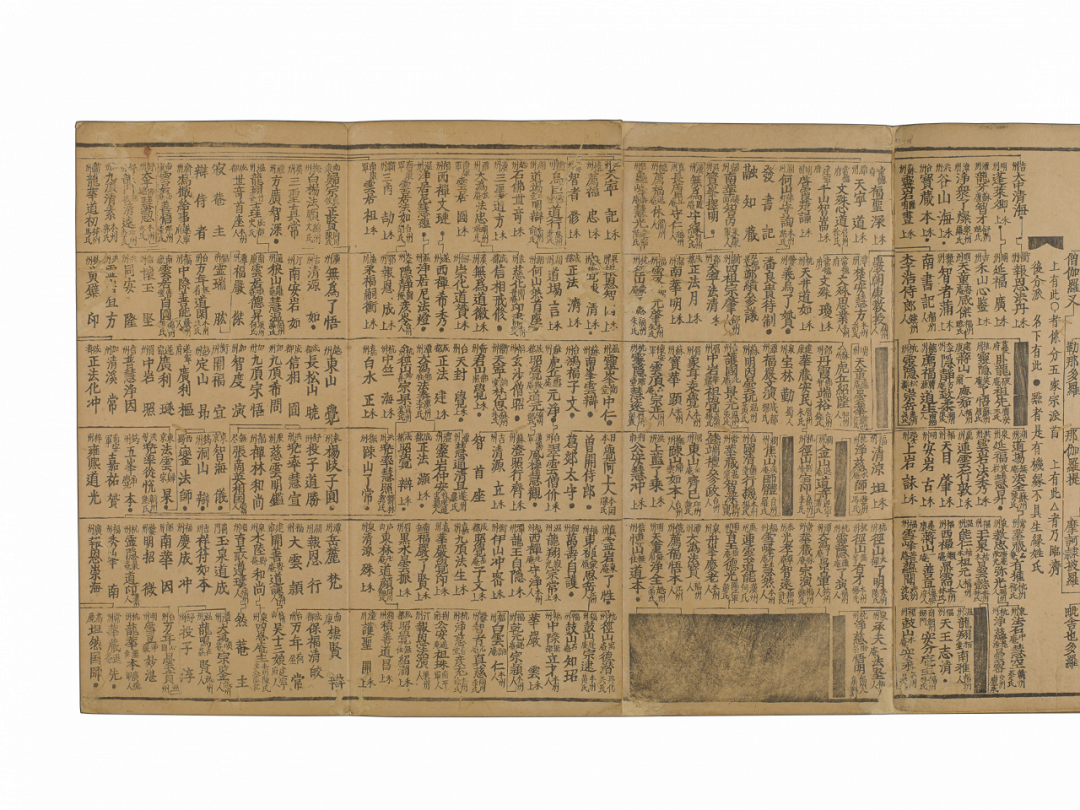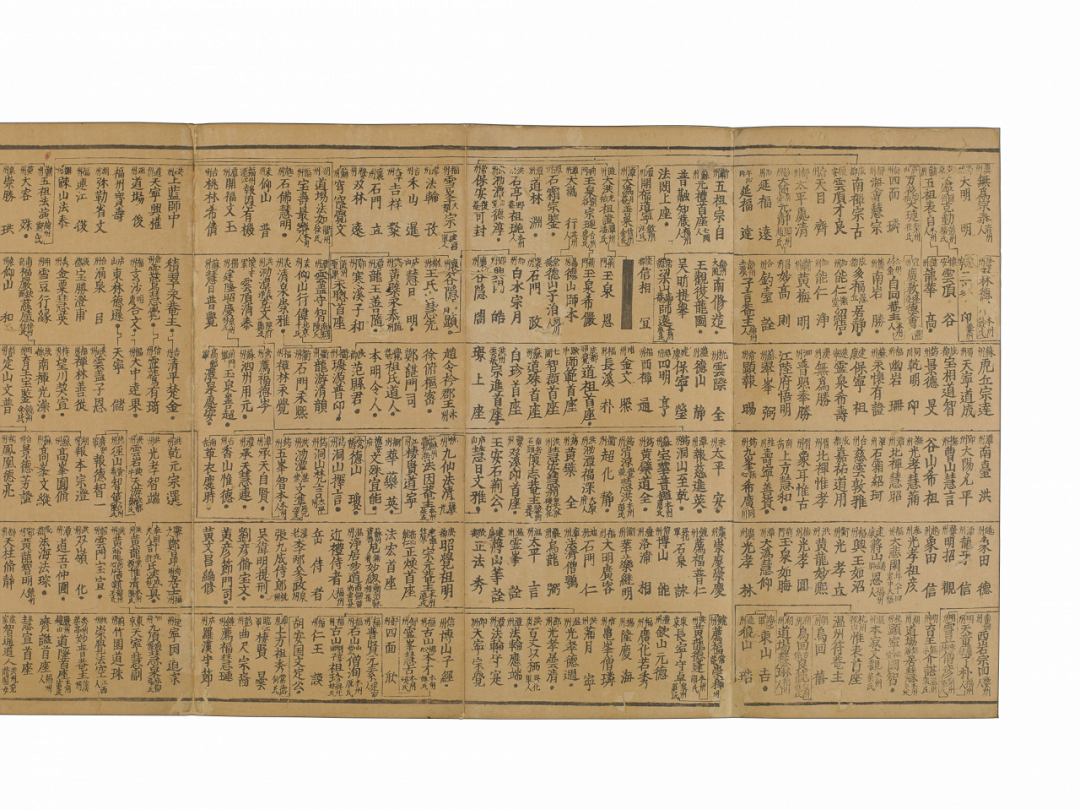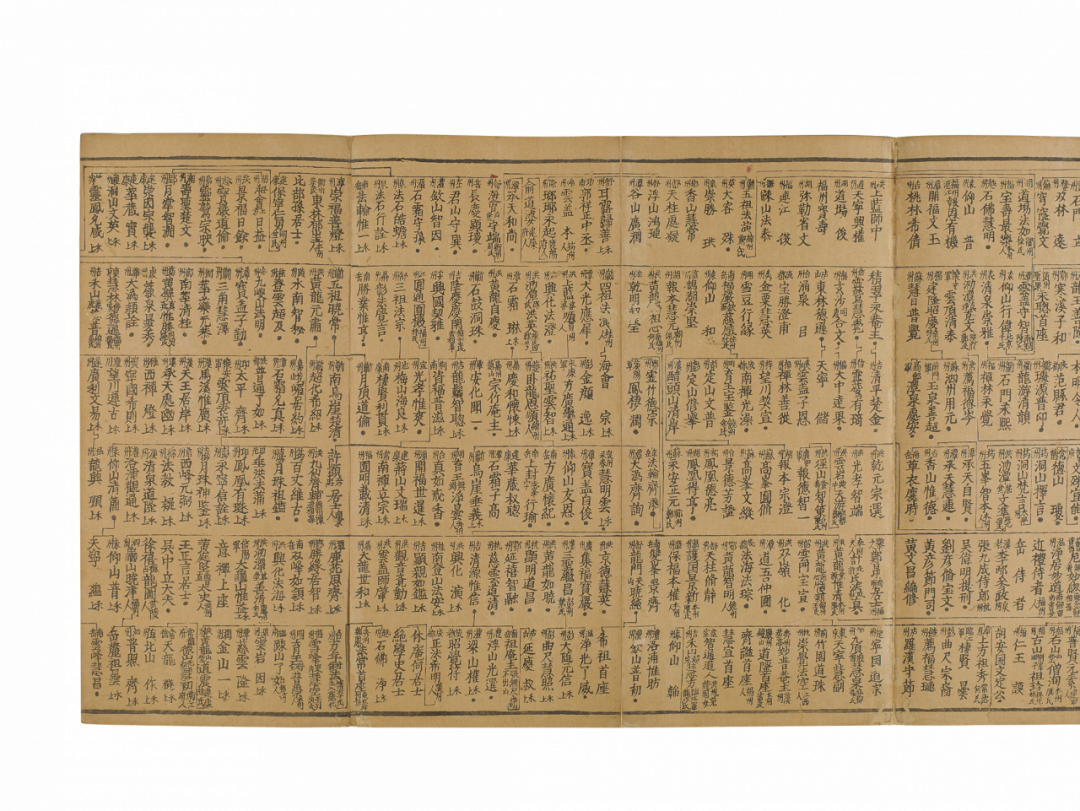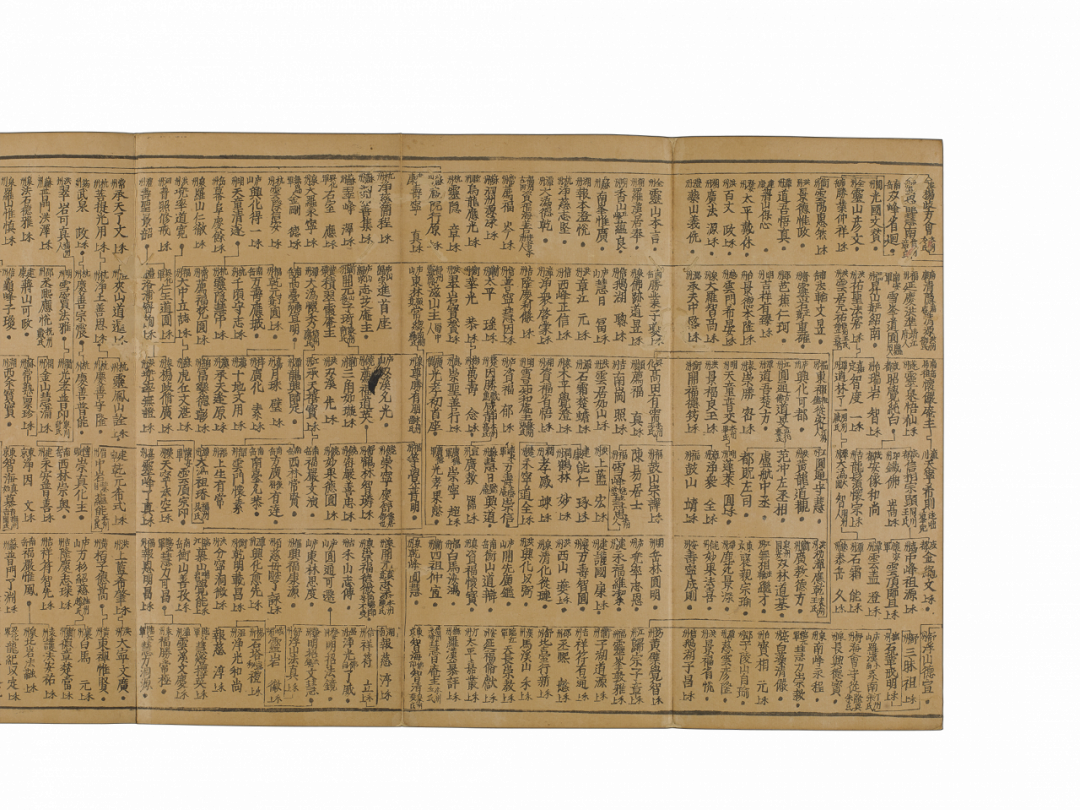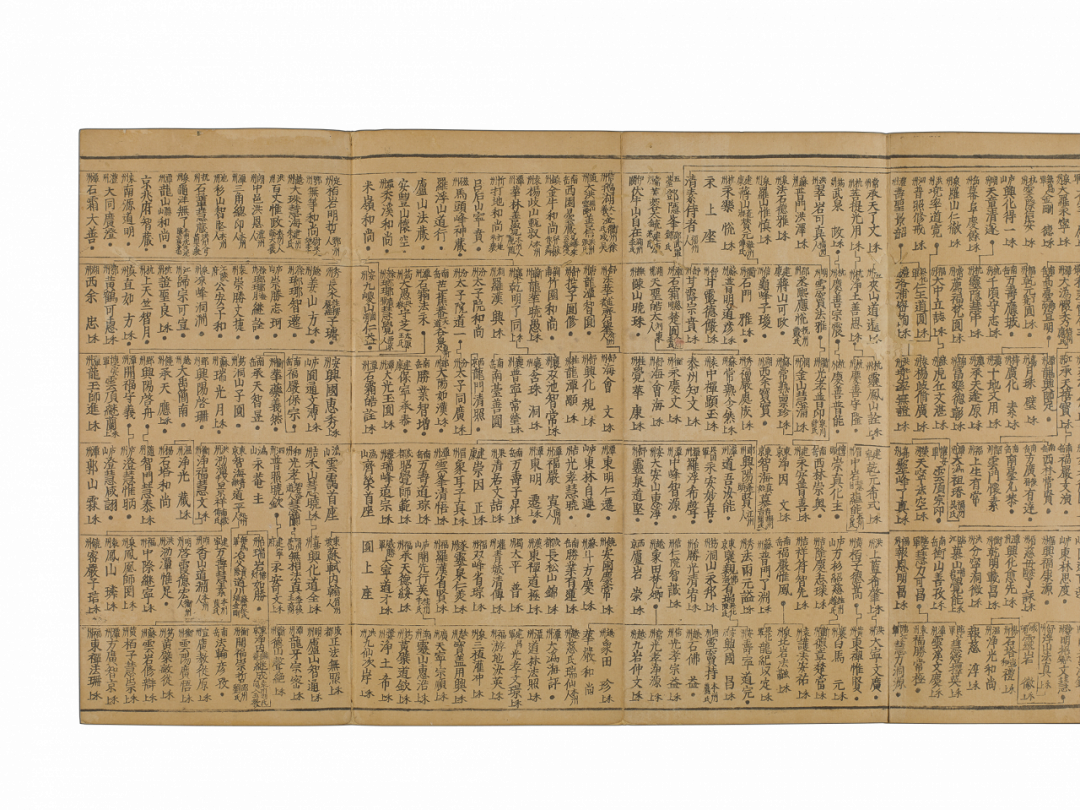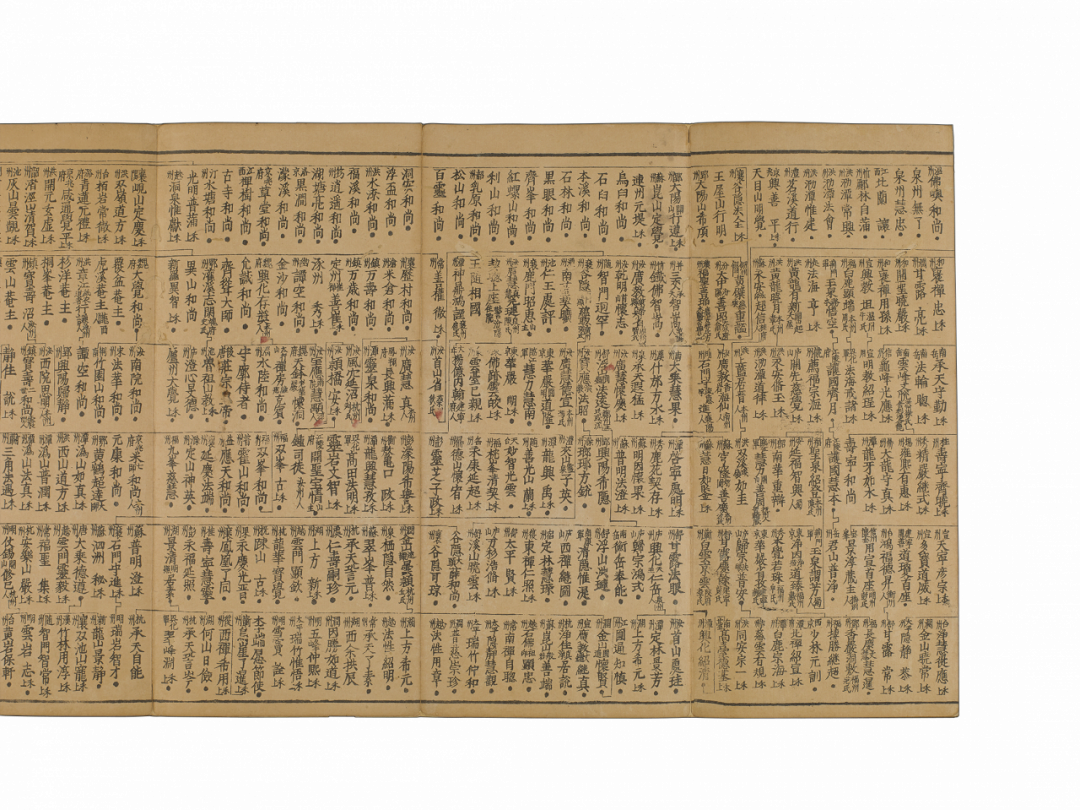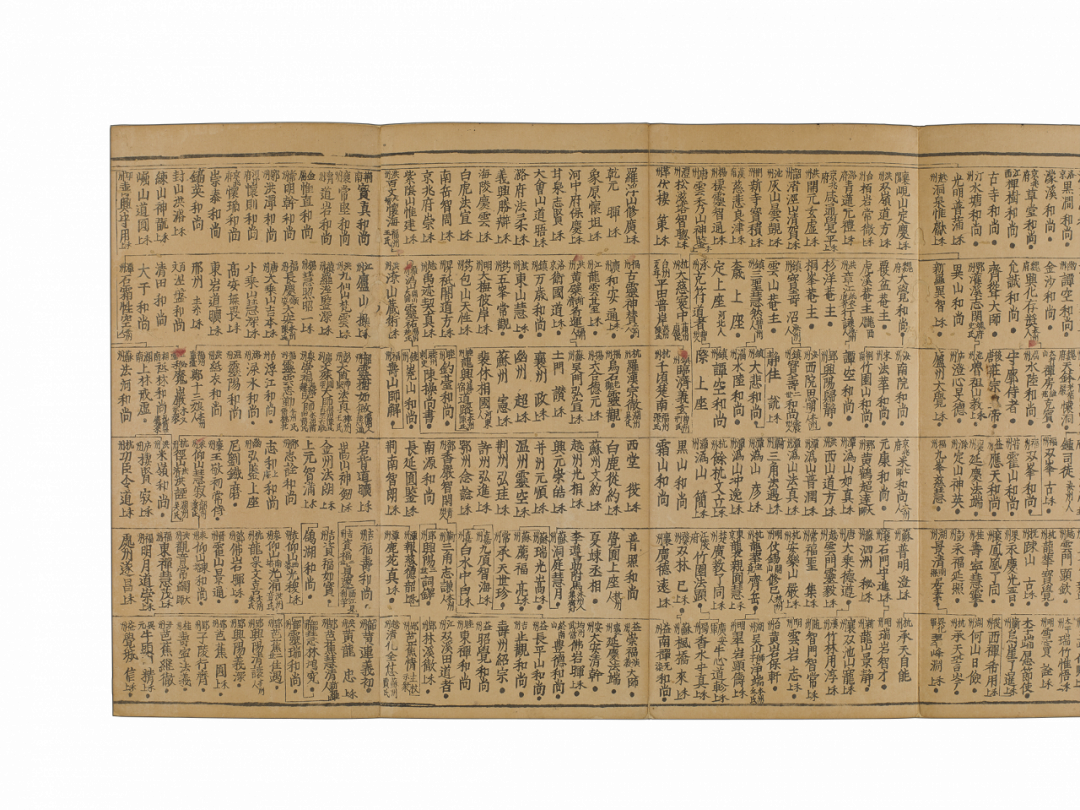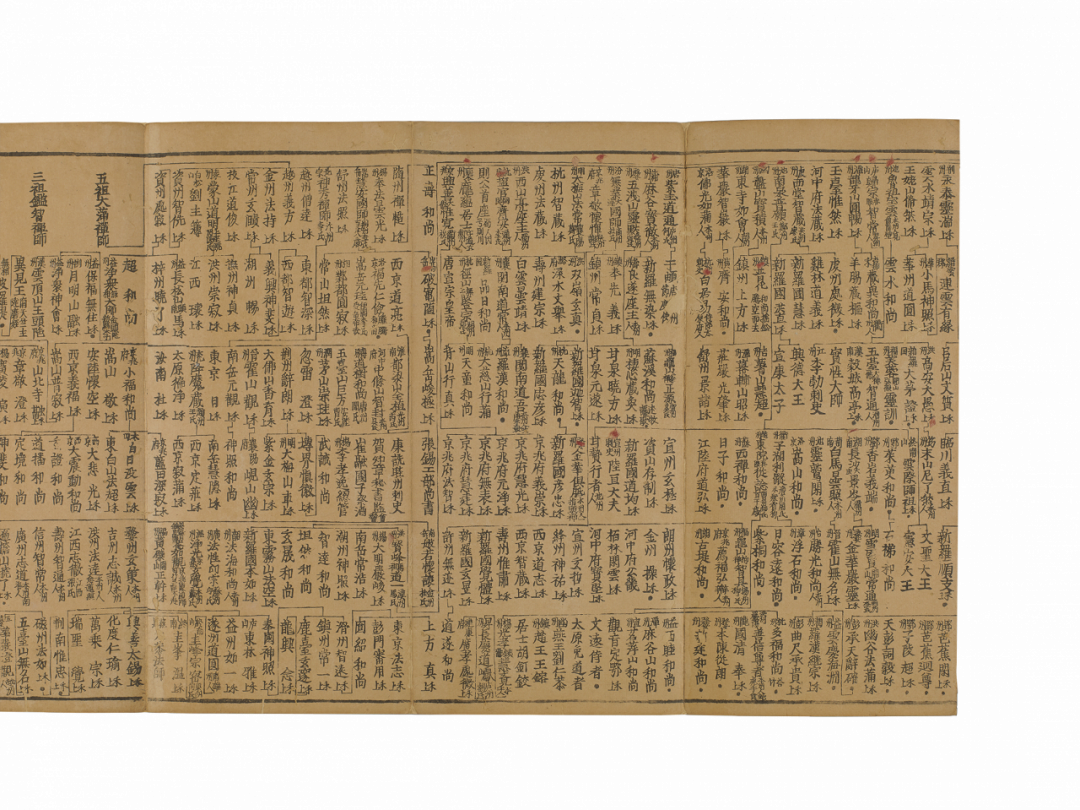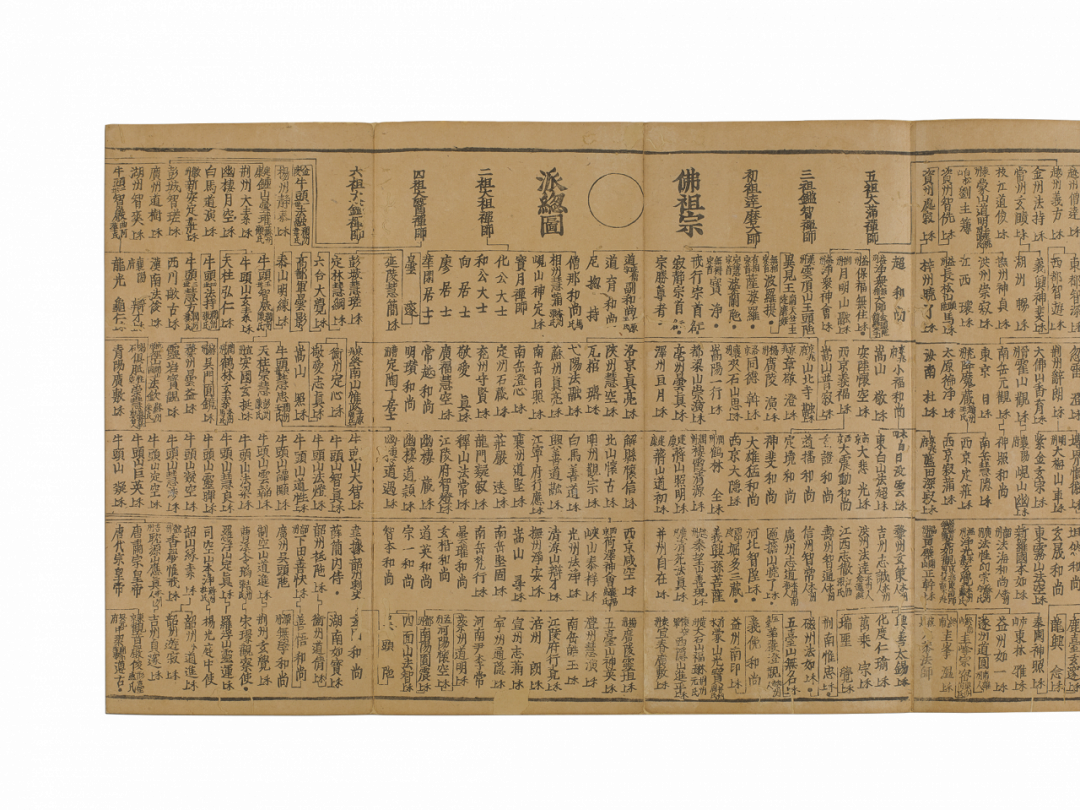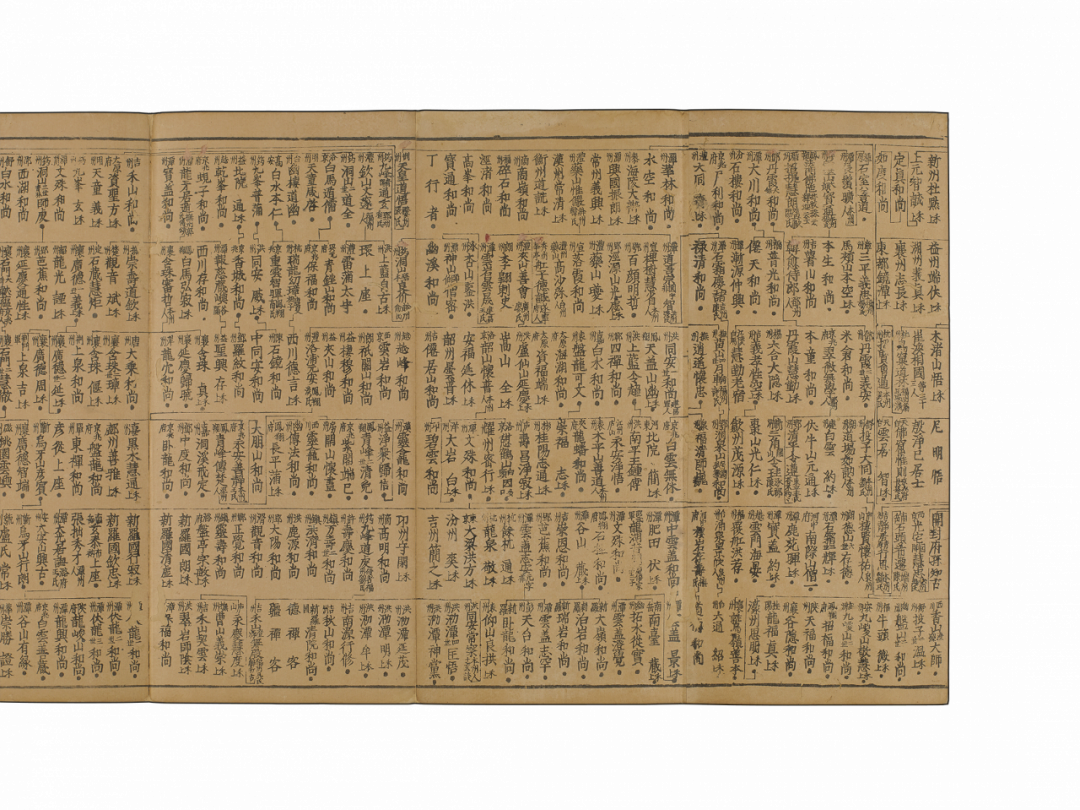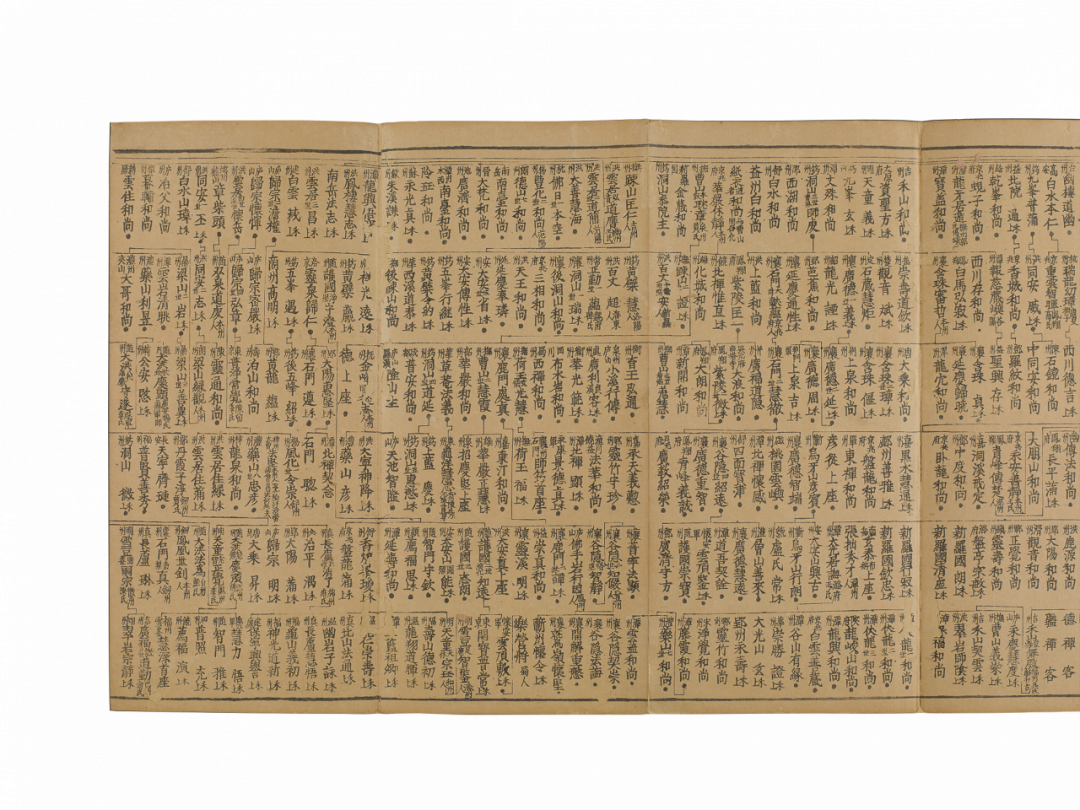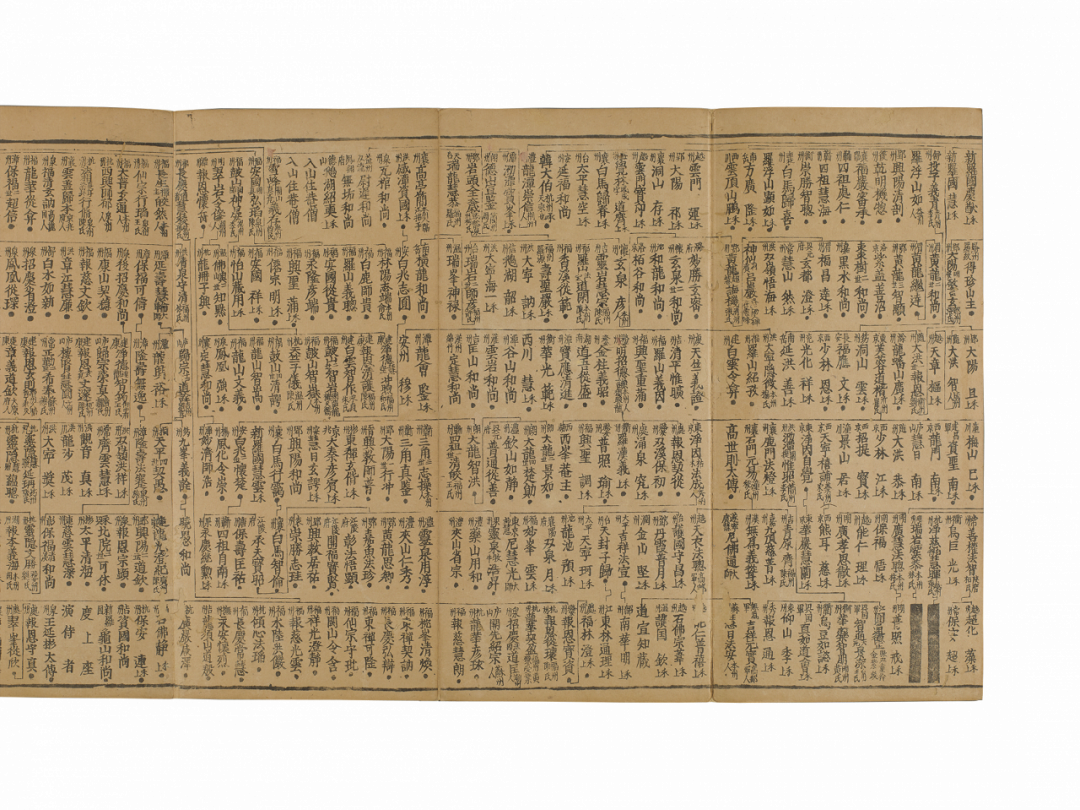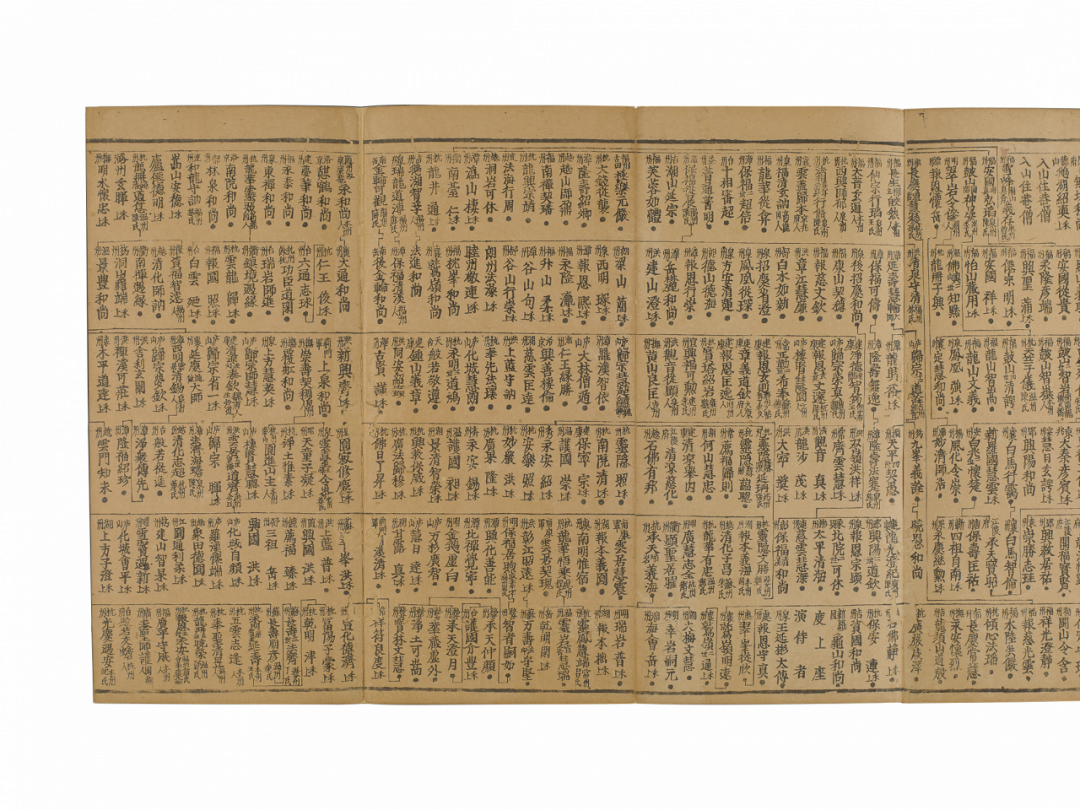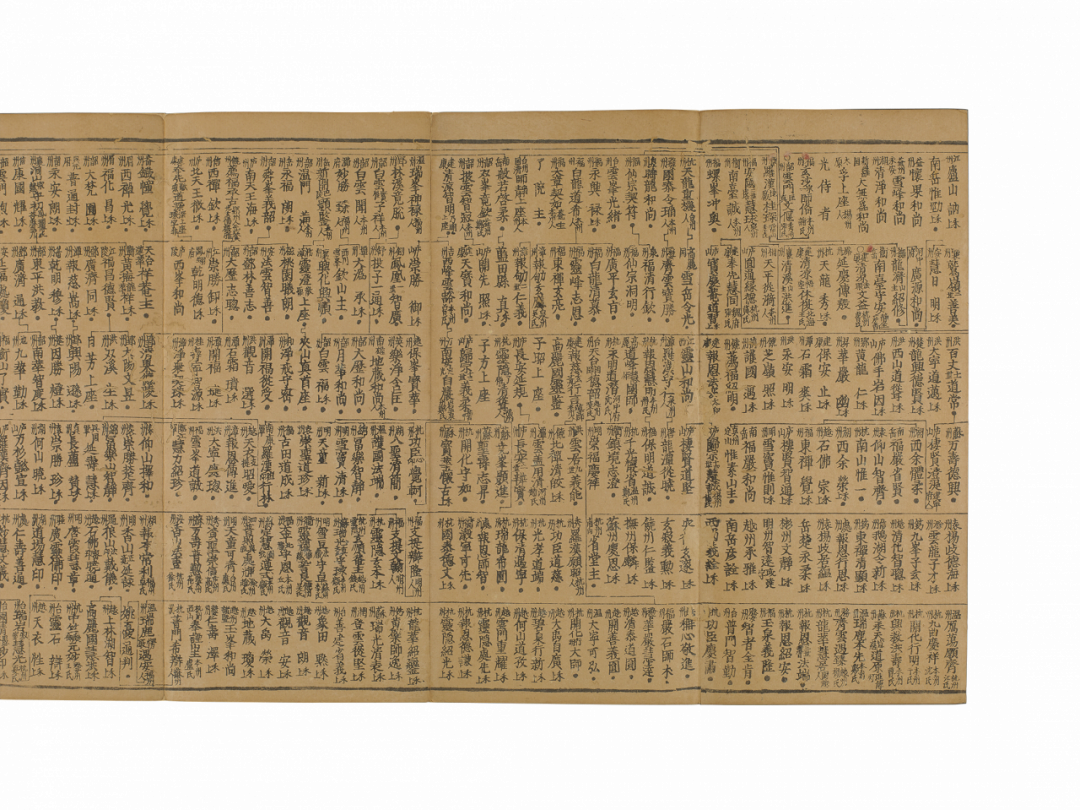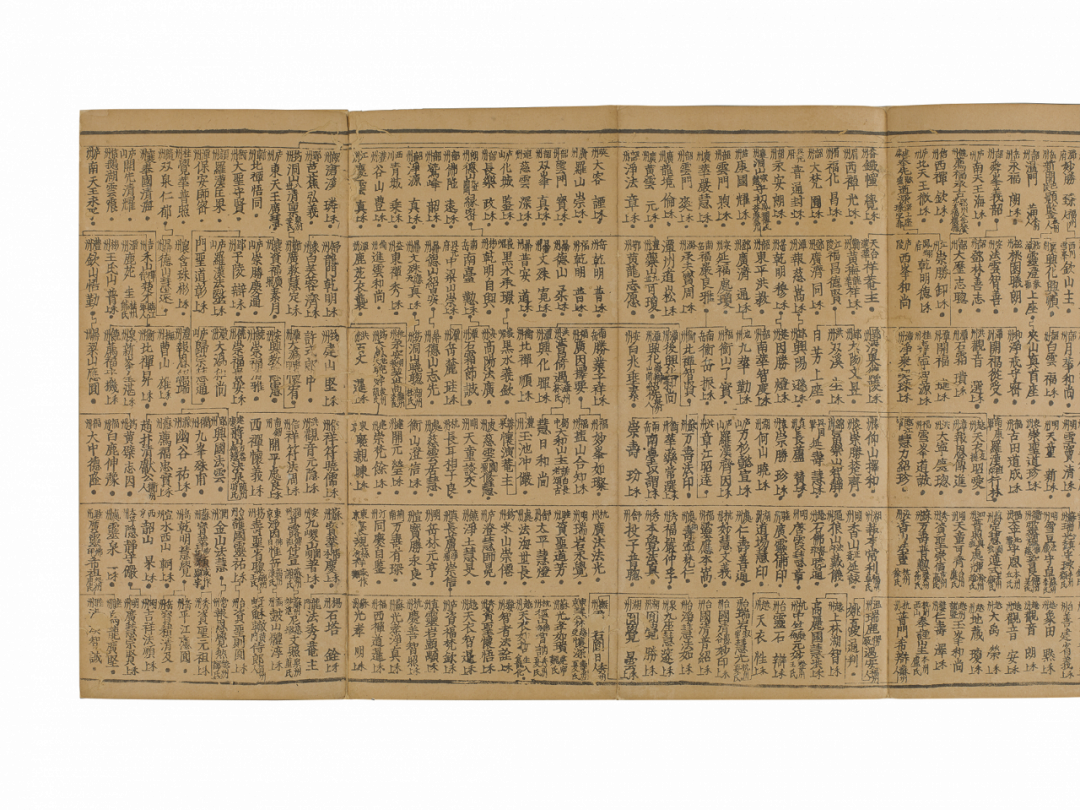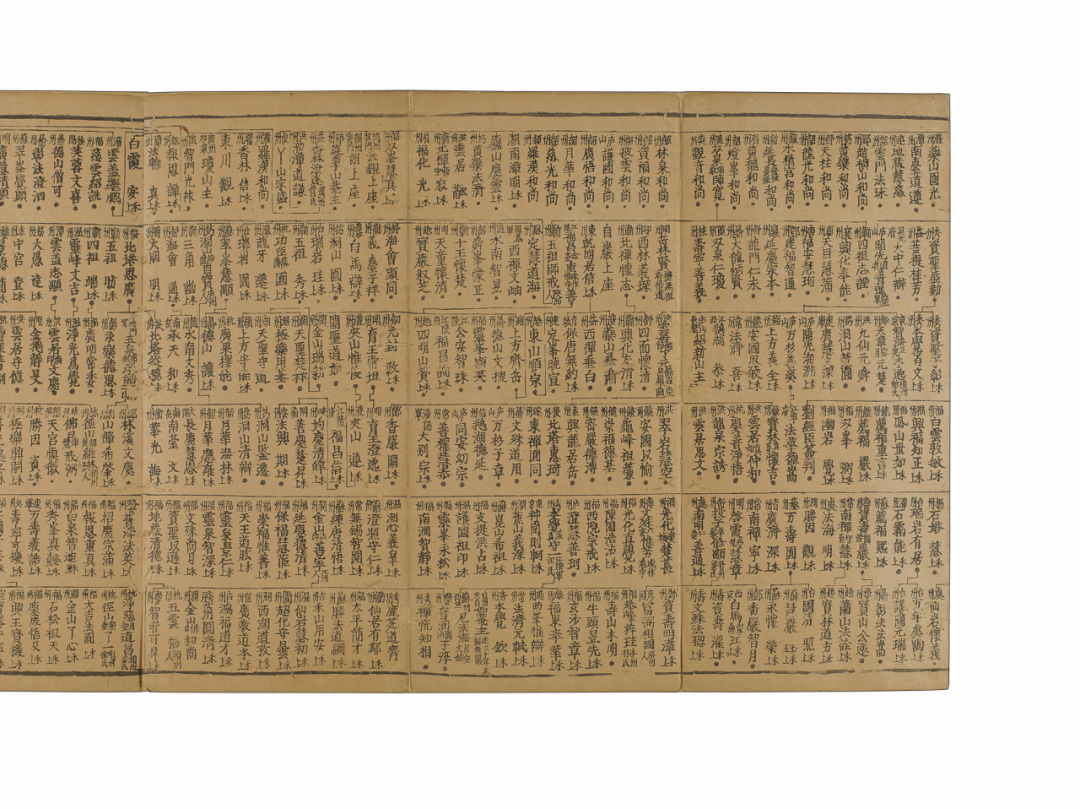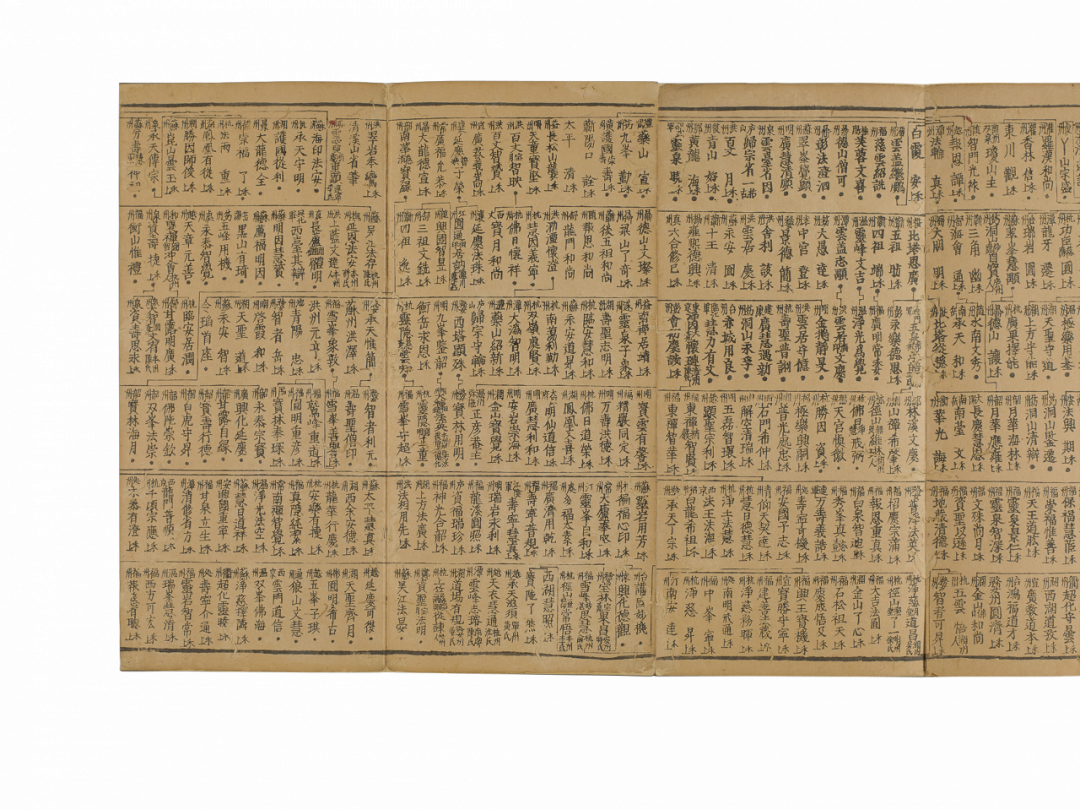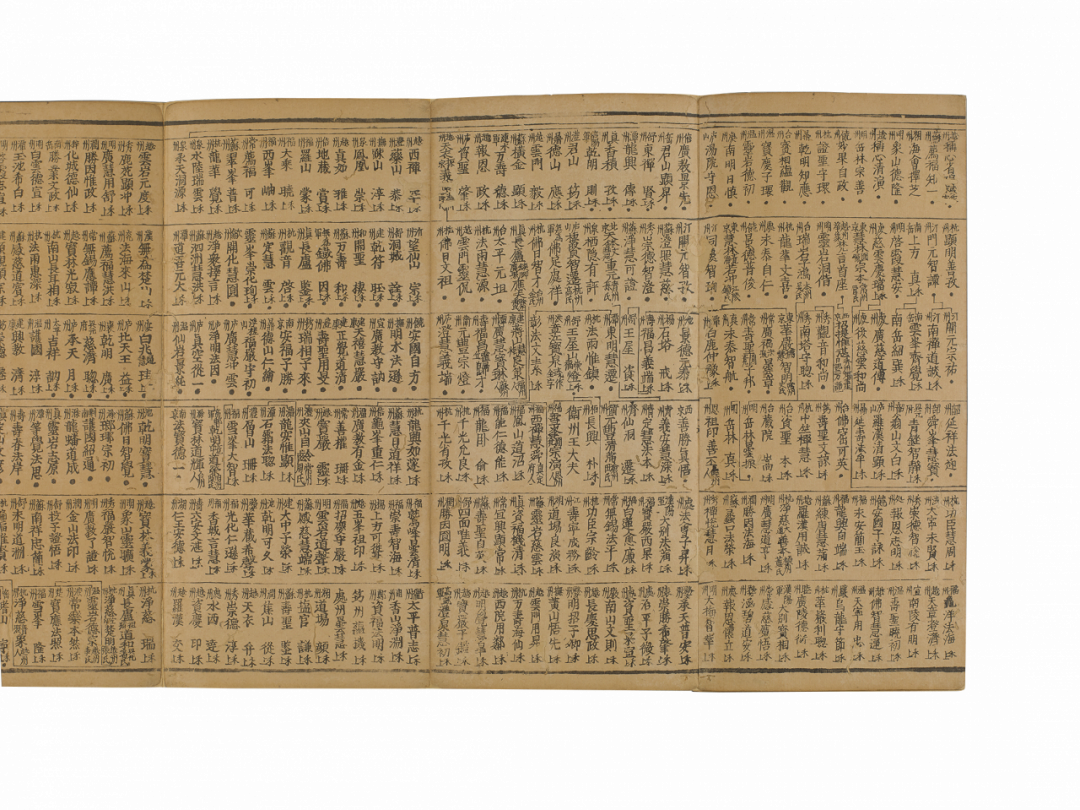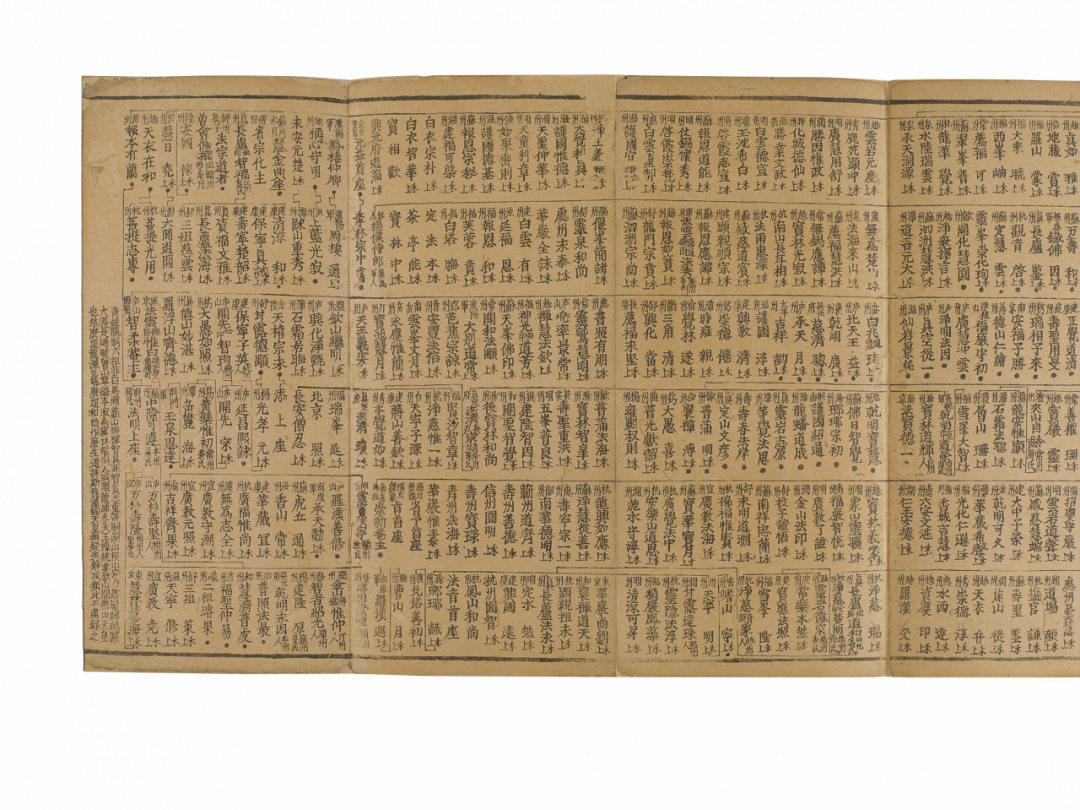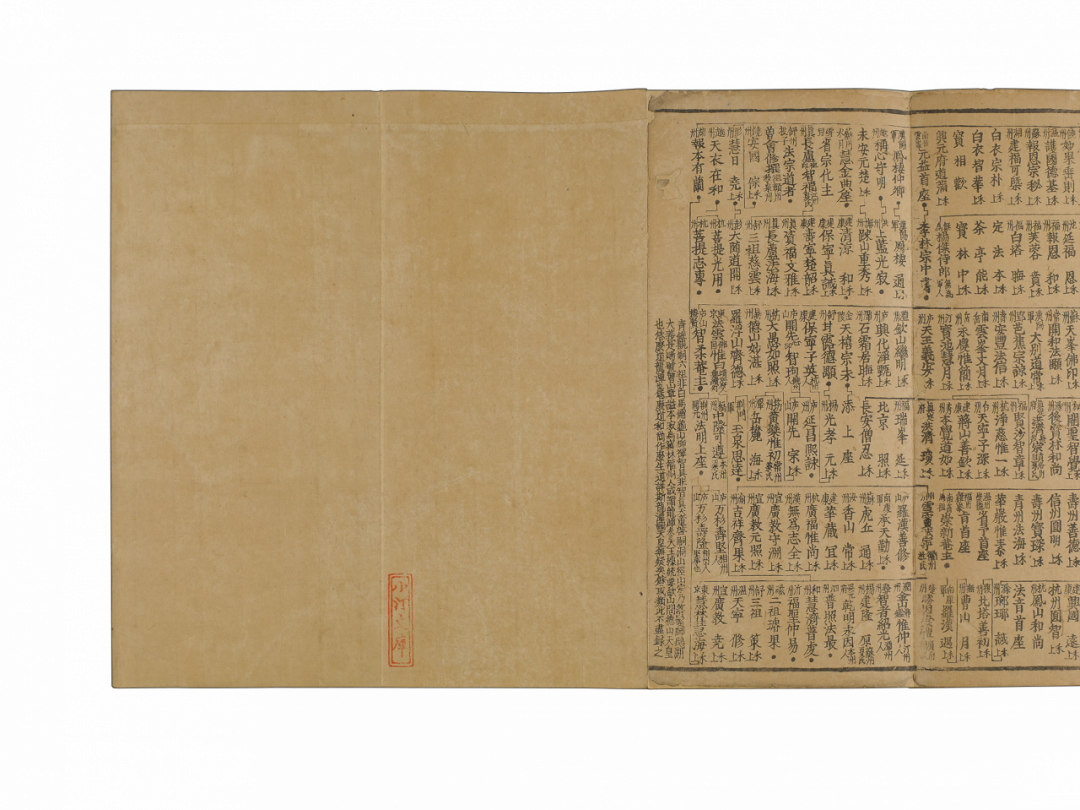Fozu zongpai tu (Patriarchal Lineage Chart of Chan Buddhism)
Chan (or Zen) Buddhism saw great vitality in its development after the mid Tang dynasty. Five schools were gradually formed and each lineage started organising its genealogy. Their genealogy charts gained great popularity during Song dynasty. Five great works, namely Jingde chuandenglu (Record of the transmission of the Lamp of the Jingde era), Tiansheng guangdenglu (Expanded record of the transmission of the Lamp of the Tiansheng era), Jianzhong Jingguo xudenglu (Sequel of the transmission of the Lamp of the Jianzhong Jingguo era), Liandeng huiyao (Essence of successive Lamp Records) and Jiatai pudenglu (Universal record of the transmission of the Lamp of the Jiatai era) were compiled. Collectively known as the Five Lamps, they were historical classics greatly valued by Chan followers. Denglu, or Lamp Record, refers to a special genre of Buddhist literature that puts equal importance on historical records and treatises, emphasises transmission of lineages as well as the words, deeds and ideology of successive Chan patriarchs. Lamp is a metaphor of the Dharma. The transmission of the Dharma among Chan masters is like perpetual passing on of the lamp. Apart from establishing the affinity between Dharma lineages and Śākyamuni Buddha, the compilation of Lamp Records also allowed the activities of eminent Chan masters of the time to be documented, thus leaving vivid imprints of the Dharma lineage of Chan Buddhism.
This album of Fozu zongpai tu (Patriarchal Lineage Chart of Chan Buddhism) is a Lamp Record compiled in genealogical form. The words and deeds of the patriarchs are omitted; only their epithets are written down. The lineage is chronologically charted from the primordial Seven Buddhas and Śākyamuni Buddha down through successive Chan patriarchs of Indian and Chinese origin, containing over 4,700 monastics. This album is believed to be published after the 2nd year of the Jiaxi reign (1238) of the Southern Song dynasty. The compiler was the Southern Song monk Ruda (birth and death years unknown) who collated the content of the Five Lamps and added other information he verified. He presented this work to his teacher Wuzhun Shifan (1179-1249) for approval before publishing it. Wuzhun Shifan was an eminent monk of the Linji school of the Song dynasty, and Abbot of Lingyin Monastery and Jingshan Monastery in Hangzhou. He had been invited by Emperor Lizong (r.1224-1264) to the imperial court to give teachings and was conferred the title of Fojian Chanshi (Discerning Master of Chan Buddhism). No extant copy of Fozu zongpai tu has survived inside China. Besides the one in our collection, the only known Song edition copy is kept in Tofukuji Temple in Kyoto, Japan. The Tofukuji copy and the present lineage chart basically share the same text and layout, but their typefaces differ slightly in style, indicating that they were not printed from the same engraved block. The Tofukuji copy was originally handed by Wuzhun Shifan to the Japanese monk Enni Ben’en (1202-1280) who carried it back to Japan in 1241 and later founded the Tofukuji Temple in Kyoto. The present lineage chart was first mentioned in September 1938 in Kanpō, an official gazette of the Japanese government. Its early provenance is unknown but the latest known collectors were Ishii Mitsuo (1881-1966) and Obama Toshie (1889-1972).
